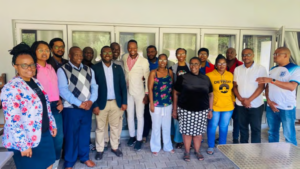 Across the world, dangerous trends on mixed migration are observed. These include increasingly high numbers of migrants who go missing or die along mixed migration routes, ongoing commodification of refugees and migrants, and rising violent pushbacks and expulsions at borders. Despite these challenges, refugees and migrants are continuing their journeys and often taking great risks. It is therefore essential that policymakers develop better migration policies, based on solid evidence and analysis. With the right policy, legislation and practices in place, Southern Africa Development Community (SADC) countries can achieve fair and effective migration governance fostering a positive impact of international migration in the economic growth and development of countries of origin, transit, and destination.
Across the world, dangerous trends on mixed migration are observed. These include increasingly high numbers of migrants who go missing or die along mixed migration routes, ongoing commodification of refugees and migrants, and rising violent pushbacks and expulsions at borders. Despite these challenges, refugees and migrants are continuing their journeys and often taking great risks. It is therefore essential that policymakers develop better migration policies, based on solid evidence and analysis. With the right policy, legislation and practices in place, Southern Africa Development Community (SADC) countries can achieve fair and effective migration governance fostering a positive impact of international migration in the economic growth and development of countries of origin, transit, and destination.
The workshop focused on the understanding and appreciation of the concepts of mixed Migration flows and equipping participants with the skills for the Identification, Protection and Referral of vulnerable individual in Mixed Migration Flows.
The aim was to increase the understanding of the concept of mixed and irregular migration and acquisition of skills and knowledge to identify vulnerable individuals in mixed migration flows, including but not limited to refugees and asylum seekers, rejected asylum seekers, victims of trafficking, presumed trafficked persons, person at risk of being trafficked, unaccompanied or separated children, stranded migrants, stateless migrants, and other vulnerable migrants, who require referral to appropriate services, in co-ordination with relevant governmental and non-governmental actors and development of a model framework to facilitate effective referrals of vulnerable migrants, refugees, and asylum seekers to other service providers for protection.
 English
English


